Eye Protection Standards
Guide to Eye Protection Australian Standards
AS/NZS 1337.1 – Eye and Face Protection Standard
AS/NZS 1337.1 is the Australian and New Zealand eye and face protection standard. Maxisafe safety glasses are rigorously tested and certified to meet these stringent standards, ensuring protection against workplace hazards including impacts, chemical splashes, and harmful UV radiation.
AS/NZS 1336 – Eye and Face Protection Guidelines
This standard outlines requirements and recommended practices for protecting eyes and faces from hazards like flying particles, splashes, molten metals, gases, vapours, solar radiation, and high-intensity radiation. It promotes health and safety by guiding hazard elimination, control, and correct selection and use of eye protectors.
AS/NZS 1337.1 – Occupational Applications
This section defines the minimum requirements for non-prescription eye and face protectors. It includes protection against flying fragments, dust, splashing materials, molten metal, gases, vapours, and aerosols. The standard details impact resistance levels (low to extra high) and outlines testing methods for compliance.
Lens Markings
| Type of Protector | Ocular Marking(s) | Eye Protector Marking(s) |
|---|---|---|
| Low impact | 'HT' or 'CT', optional 'S' | No additional requirement |
| Medium impact | 'I' or 'F' | 'I' or 'F' |
| High impact | 'V' or 'B' | 'V' or 'B' |
| Extra high impact | 'A' | 'A' |
| Molten metal and hot solids | 'M' or '9' | 'M' or '9' |
| Splashproof | 'C' or '3' | |
| Dustproof | 'D' or '4' | |
| Gastight | 'G' or '5' | |
| Outdoor use, untinted | 'O' | 'O' |
| Sunglare ocular | Category number | |
| Photochromic sunglare ocular | Category numbers | |
| High temperature | 'H' | 'H' |
Eye Protection UV Standards

Impact Levels
| Eye & Face Protector Type | Low Impact (12m/s) | Medium Impact (45m/s) | High Impact (120m/s) | Extra High Impact (190m/s) |
|---|---|---|---|---|
| Wide Vision Spectacle | • | • | ||
| Goggle | • | • | ||
| Eye Shield | • | • | ||
| Face Shield | • | • | • | • |
UV400 not only filters 100% of UVA rays — eliminating the 20% that passes through 380nm lenses — it also minimises temperature-induced cell changes. This is critical, as the risk of cell damage increases significantly from 380 to 400nm.

100% protection against dangerous UVA and UVB radiation
